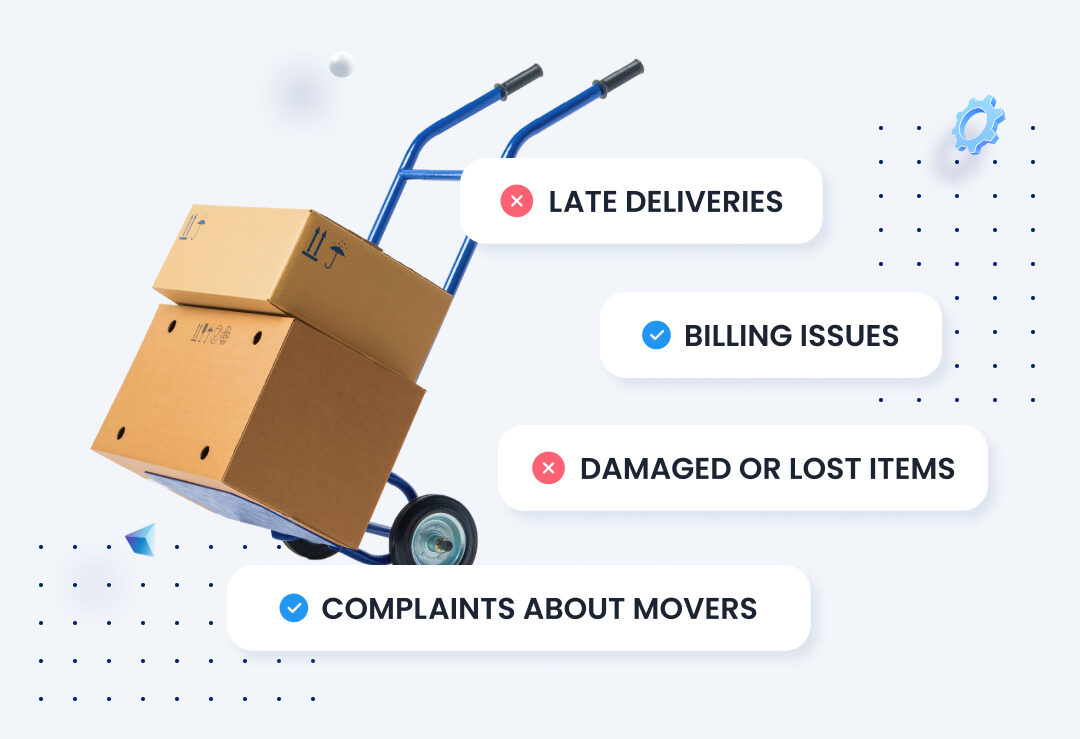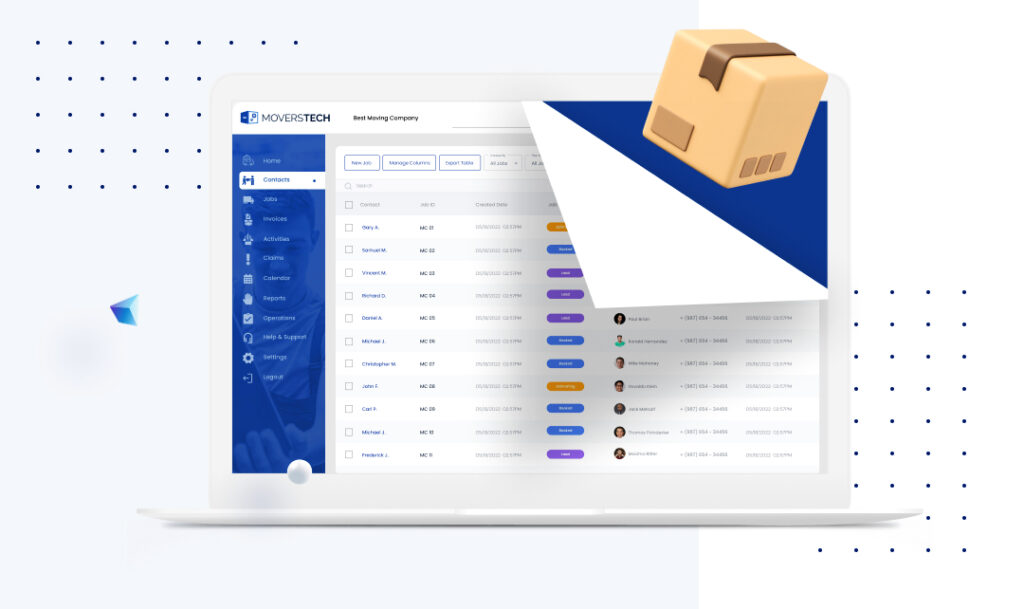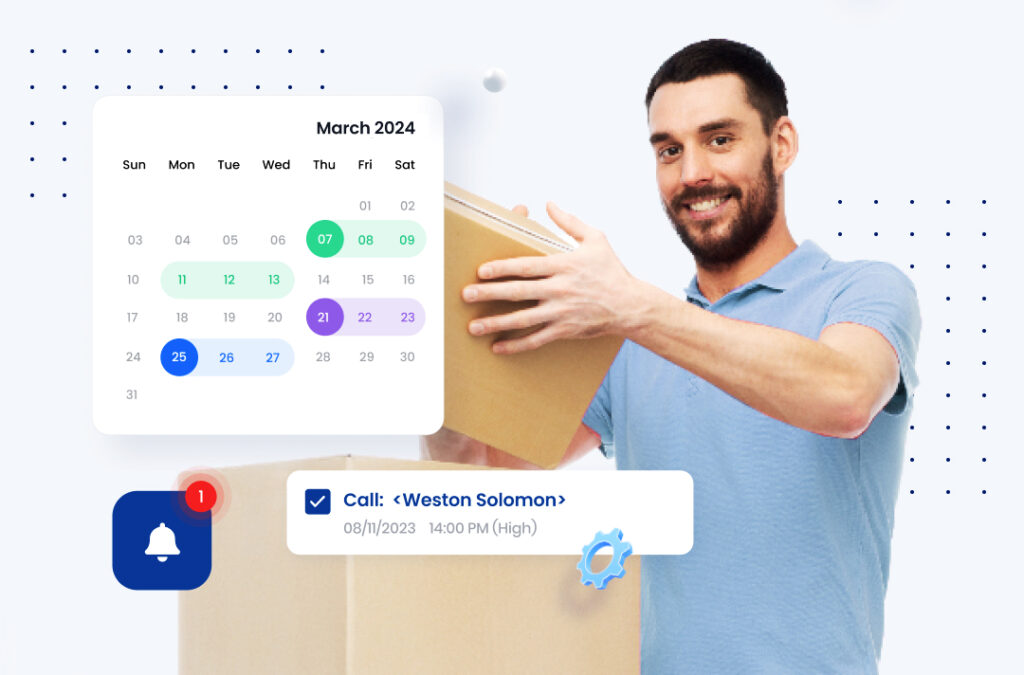3 common inventory management mistakes and how to avoid them
Book Free Demo
Managing inventory accurately is key to running a smooth moving business. Think about it—if you can’t keep track of what’s going where, how can you expect to give customers an accurate price or ensure everything arrives safely? Plus, there’s the issue of legal compliance and making sure your clients are happy with the service.
That’s where CRM software comes in. It’s like having an extra set of hands that not only helps you create and maintain inventory lists but also ties everything together—pricing, resource allocation, insurance, and more. In this post, we’ll dive into three common inventory management mistakes and how you can avoid them with a little help from CRM software designed just for movers.
Mistake 1: Inaccurate or incomplete inventory lists
One of the biggest pitfalls in inventory management is dealing with inaccurate or incomplete inventory lists. This problem often arises when item details are missing or incorrect, leading to a chaotic and disorganized system. The repercussions can be severe—missing or incorrect items not only lead to dissatisfied customers but can also result in a spike in claims, damaging your company’s reputation.
Moreover, inaccurate inventory lists can disrupt the estimation of resources and time, leading to discrepancies in pricing, especially for long-distance moves. Such issues also impact documentation, which must strictly comply with regulations. Incomplete lists can easily spark disputes with customers, wasting valuable time and potentially leading to negative reviews.
To avoid these headaches, CRM software provides standardized templates for inventory creation, ensuring consistency and accuracy across the board. The automated inventory list generation feature minimizes human error and speeds up the process, while customizable fields allow you to include specific details tailored to each move.
Keeping your inventory as detailed and up-to-date as possible is crucial for smooth operations. With MoversTech CRM, you can edit the inventory at any stage of the move, adding custom items or making adjustments to the inventory function itself for added precision and convenience. This level of control not only enhances operational effectiveness but also builds customer trust, helping to maintain smooth operations and high levels of satisfaction.

Mistake 2: Not allocating packing materials
A common oversight in inventory management is failing to properly allocate packing materials. This step is often overlooked during the initial estimate or when compiling the packing list, but it’s crucial for a smooth move. Every box—whether pre-packed by the customer or packed by the movers (carrier-packed)—needs to be accounted for. It’s not just about knowing how many boxes you have; it’s also about understanding the space they’ll occupy on the truck and how this affects the overall cost.
This becomes even more critical for storage jobs, where proper labeling and organization are essential to avoid confusion later on. Skipping this step can lead to miscalculations in space and cost, resulting in unexpected charges or inefficiencies during the move. Using CRM software can help reduce these expenses.
Some advanced CRM systems can automatically add these boxes to your inventory, ensuring nothing is missed. This feature not only saves time but also reduces the risk of errors. With everything accurately logged, you can better plan the truck space and pricing, providing a more reliable service to your customers.

Mistake 3: Not labeling delicate and bulky items
Another critical error in inventory management is failing to properly label delicate and bulky items. Imagine showing up to a job only to realize there’s a massive safe that wasn’t accounted for on the cube sheet or inventory list. Untrained sales staff could easily overlook such crucial details, leading to significant problems down the line. Not only can this result in price discrepancies, but it can also mean arriving on-site unprepared, without the proper equipment, which ultimately leads to unsatisfied customers and added expenses.
To avoid these issues and present yourself as a serious, professional company, implementing standardized “tags” for your inventory is essential. By identifying and labeling:
- High-value items
- Fragile items
- Bulky items
- Items that require third-party services (such as crating, mounting/dismounting, disassembly, or specific boxes)
you ensure that nothing is missed or mishandled. A moving CRM can be particularly helpful here, allowing you to set up these standardized tags so that your staff can easily identify and account for these special items. This level of detail not only helps in preparing for the move but also ensures that your pricing is accurate and that your team is fully equipped to handle everything, reducing the risk of mistakes and additional costs.
Training and implementation
Successfully implementing CRM software requires proper training and planning. Train employees to use the software effectively, including entering data, generating moving reports, and utilizing all available features. A clear implementation plan should be in place, covering the setup of the software, migration of existing data, and testing of the system before full deployment. Ongoing support and training can help ensure that the business continues to benefit from the CRM software over time. For additional guidance on effective training practices, you can refer to authoritative resources.

Elevate your moving business with effective inventory management
Accurate inventory management is essential for the success of the moving business. Avoiding common inventory management mistakes, such as inaccurate lists, relying on paper records, and ineffective handling, can significantly improve operations. CRM software is a valuable tool that helps prevent these mistakes by providing standardized templates, digital records, and improved coordination. Implementing CRM software can lead to better inventory management, satisfied customers, and a more organized moving process. Following these guidelines and leveraging CRM software enhances business operations. Start using CRM software today for a more productive and effective inventory management process, and experience the benefits of streamlined operations and increased customer satisfaction.
Stay Informed
Subscribe for industry
news & updates
"*" indicates required fields
